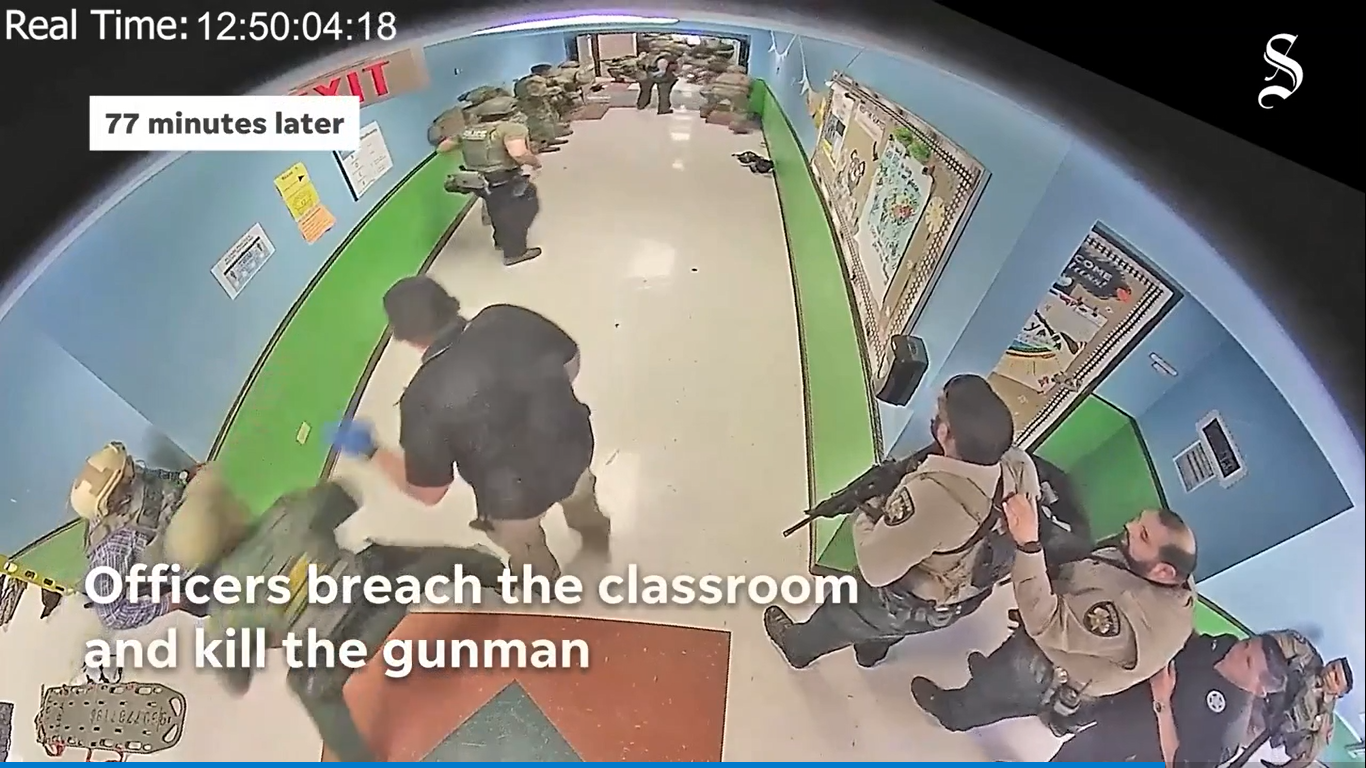
UPDATE:
As a public service to the Uvalde, Texas, families who are mostly Latinos/Latinas, the Austin-American Statesman has translated the entire Texas House Investigative report on the Uvalde school massacre into Spanish.
In “Uvalde families deserve the Texas House Committee report in Spanish. Here it is” and in “¿Por qué decidimos traducir el informe de Uvalde al español?“, Statesman editors explain the decision in English and in Spanish, respectively.
“According to the most recent Census Bureau data, half of Uvalde County residents age 5 or older speak a language other than English at home,” the Statesman writes. In addition to putting the report on-line and in print, the Statesman will be distributing copies in Uvalde and making them available free of charge.
Original Post:
A preliminary investigative report on the May 24 mass shooting at the Uvalde, Texas, Robb Elementary School was released Sunday.
The 77-page Report “critically” examines “the contributing factors to the horrific massacre at Robb Elementary School to try to provide answers and prevent similar tragedies in the future,” and finds “systemic failures and egregiously poor decision making.”
It seems imbalanced, however, how the authors of the Texas House Report on the Uvalde school massacre generously “spread the blame” for the tragedy to include the school administration, the staff, school systems and procedures, even “fences, doors, locks and keys.” The Report lumps together the actions taken by the school prior to the massacre with the glaring law enforcement failures during the massacre, calling the school’s deficiencies a “regrettable culture of noncompliance.”
While a school’s — or any public facility’s — preventative safety and security measures are important, let’s face it, the blame for the murder of 19 children and two teachers falls squarely on the shooter. Let us also acknowledge, the responding force of almost 400 law enforcement officers cannot escape the responsibility and accountability for letting the death toll reach such a tragically high number.
The lack or deficiency of safety and security policies and measures have always been recognized and, at times, have been found lacking or deficient after similar school tragedies.
However, the emphasis given these factors in the Report, referring to them as a “regrettable culture of noncompliance,” while totally ignoring the gun culture that makes such acts of unspeakable violence so prevalent in our society, is disingenuous.
While “systemic failures and egregiously poor decision making” were found both with the school’s preparation and law enforcement’s response, the Report hardly addresses the systemic failures in the state of Texas and in our nation when it comes to gun safety, control and legislation.
On the contrary, the authors – in their only mention of gun safety — find that there was nothing “legally” wrong with the 18-year-old murderer “buying two AR-15-style rifles, 60 magazines, and over 2,000 rounds of ammunition when he turned 18.” “The ATF was not required to notify the local sheriff of the multiple purchases,” they add.
It is thus hardly surprising that the members of the committee, during an hourlong question-and-answer session with reporters, “declined to address policy questions such as whether lawmakers should restrict access to assault-style weapons…” and “who, if anyone, should be held accountable for what the committee found was a catastrophic and systematic breakdown.”
The Austin-American Statesman reports:
The lack of specificity about what steps are needed to better defend Texans from mass gun violence left many of the people inside the Uvalde civic center frustrated. Several shouted insults, including “cowards,” and asked “what about guns?” as the committee members filed out.
Nor is it surprising that some news sources would jump on the alleged school failures with sensational headlines such as “Uvalde report finds teachers, staff had ‘culture of noncompliance,’ chose convenience over kids’ safety…”
The Report concludes, “Other than the attacker, the Committee did not find any ‘villains’ in the course of its investigation. “
But the “villain” is out there, in plain sight, stalking and striking, again and again.
Paraphrasing German Lopez’ “America’s Gun Problem” piece in the New York Times: “The villain is the system that allows an 18-year-old to obtain an assault rifle and kill 19 children and two teachers at an elementary school classroom in Uvalde, Texas. It is what makes the U.S. a global outlier when it comes to gun violence, with more gun deaths than any of its peers.”
















